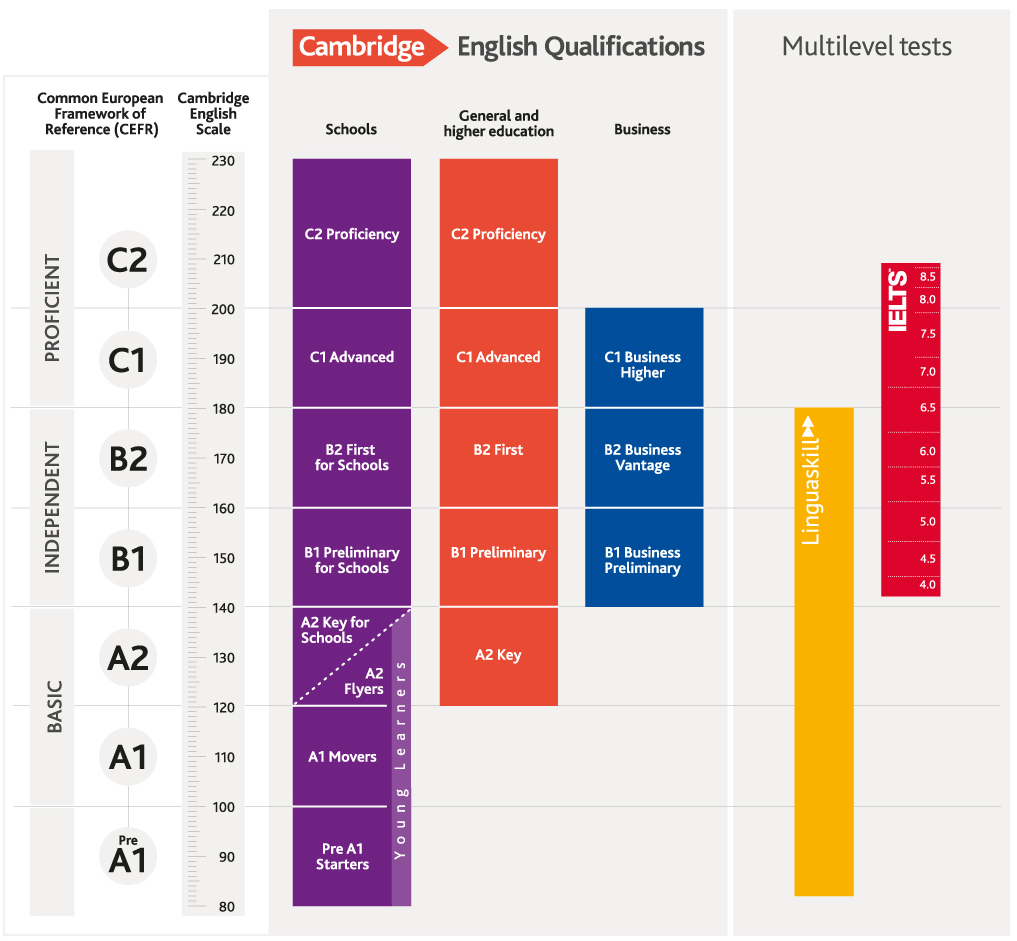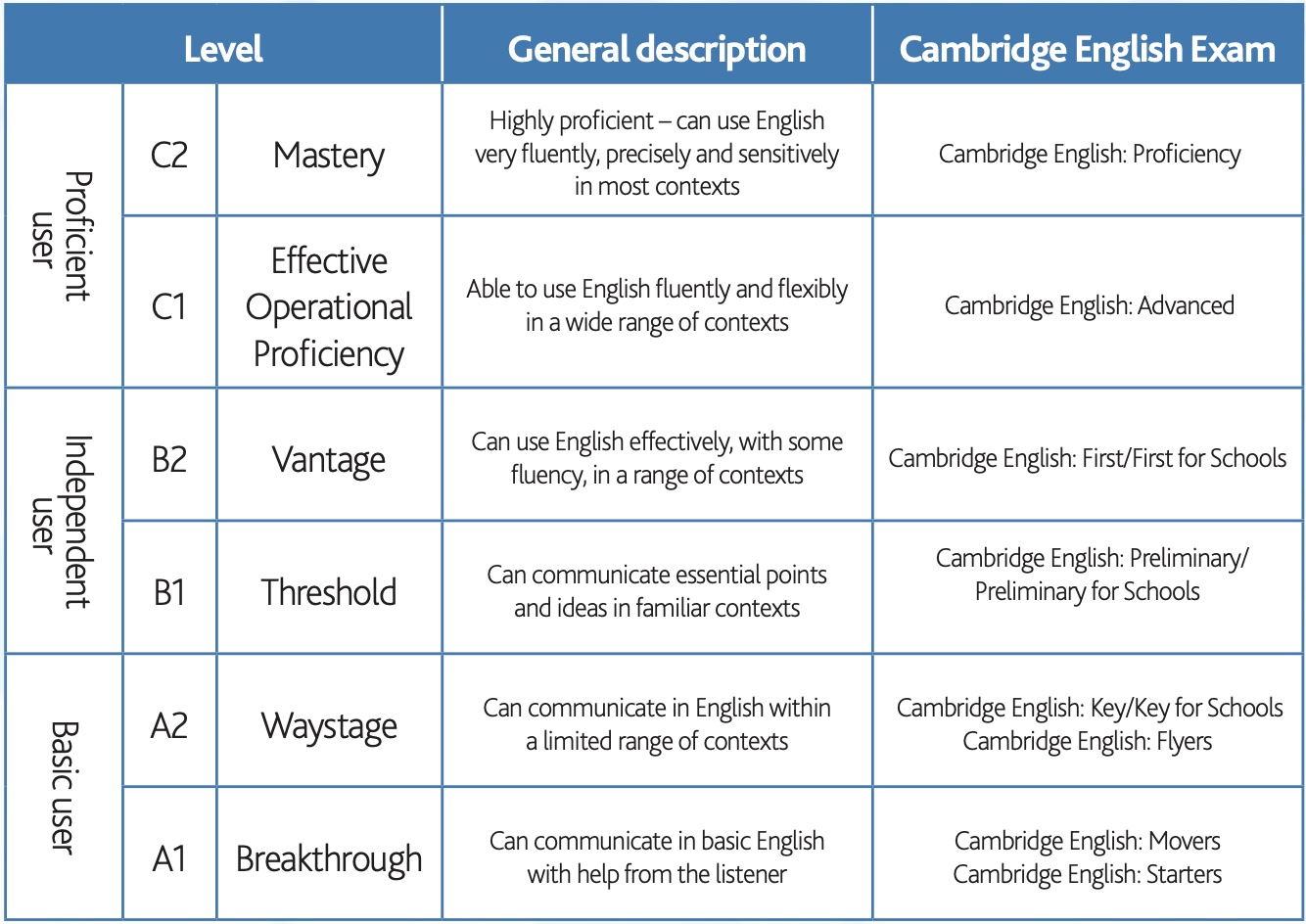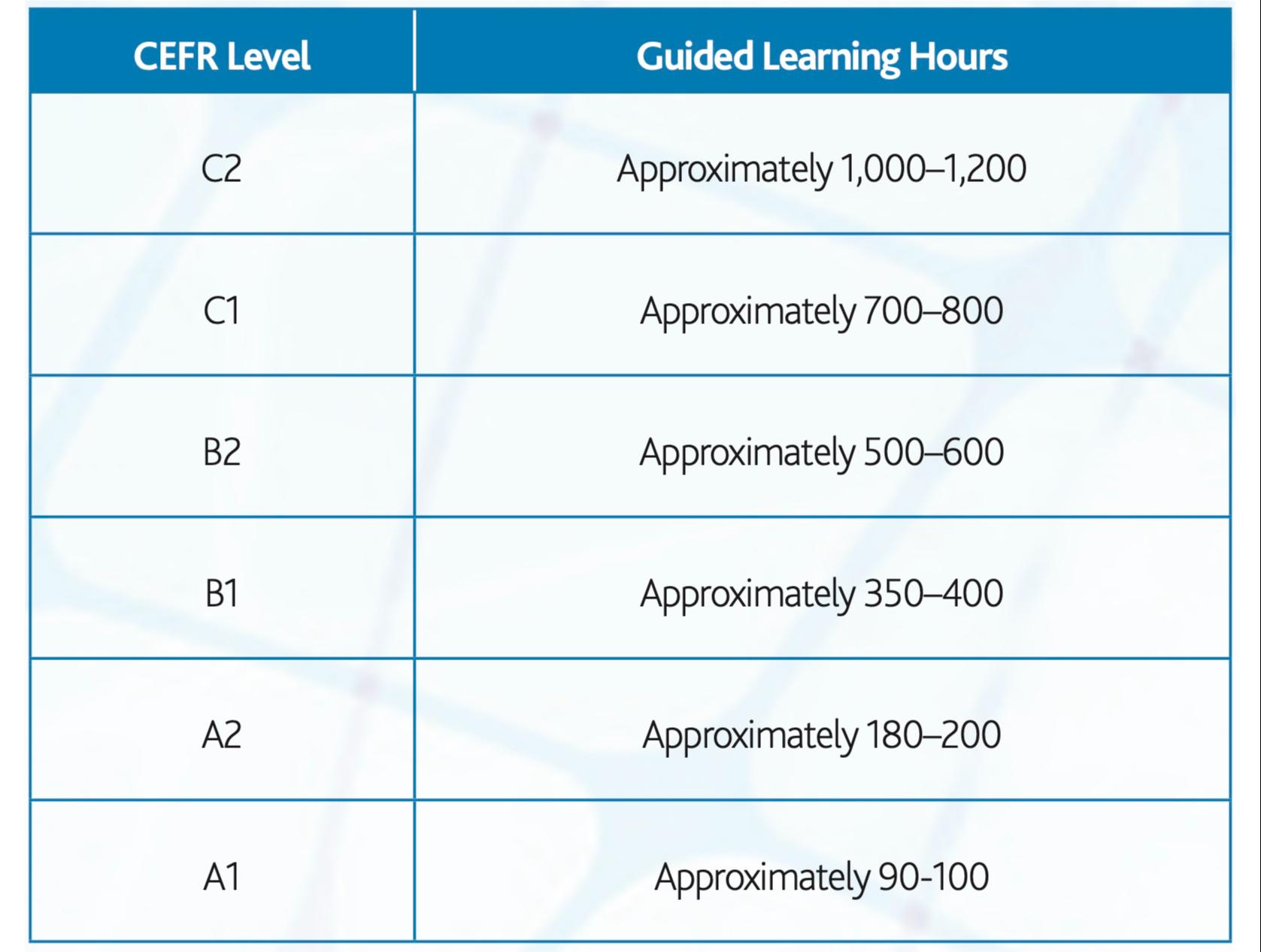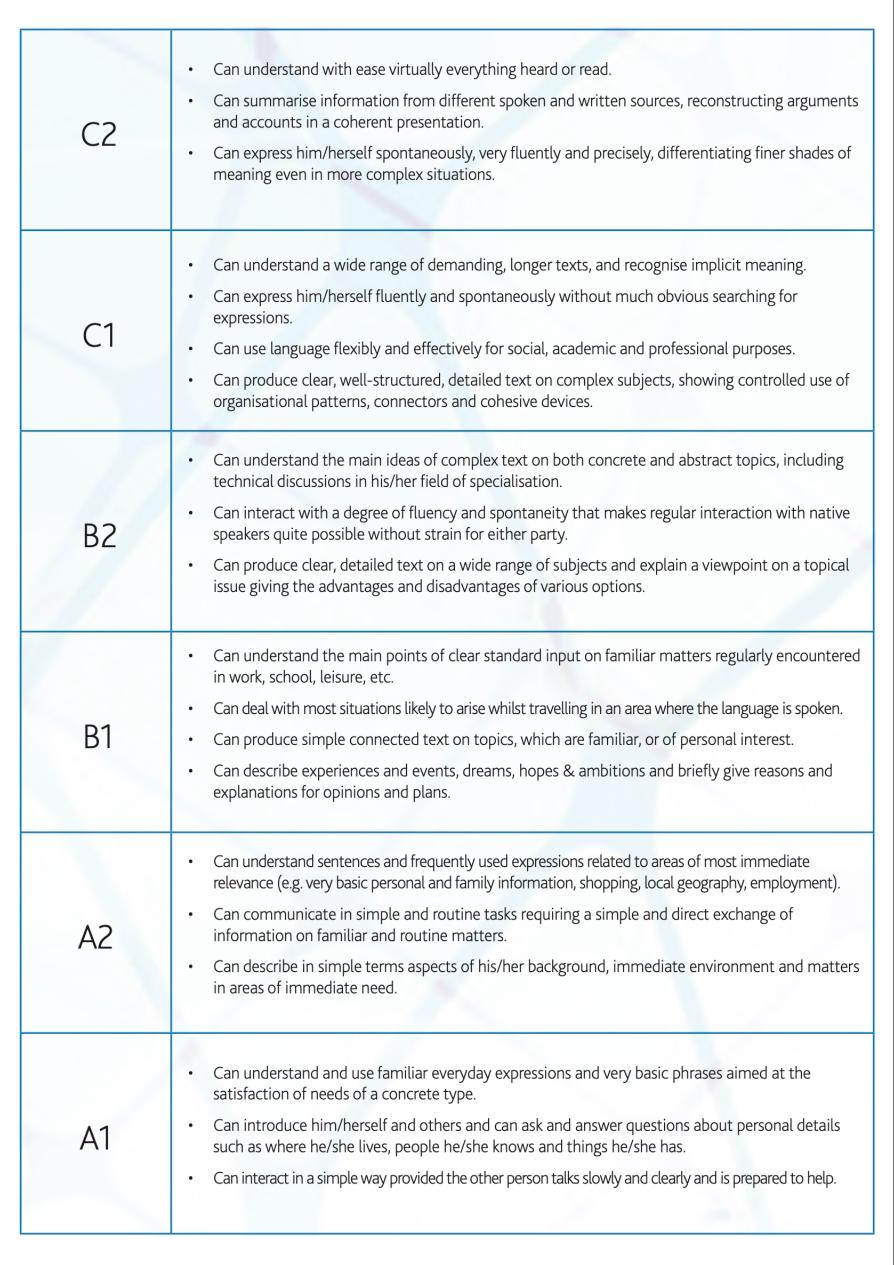Our standards-based curriculums

What is the Common European Framework of Reference (CEFR)?
The Common European Framework of Reference gives you a detailed description of learner level by skill,
in a language-neutral format. It is a useful reference document for school directors, syllabus designers,
teachers, teacher trainers and proficient learners.
The CEFR has three broad bands – A, B and C. Very loosely, you can see these as similar to Beginner,
Intermediate and Advanced – though the CEFR levels are more precise than these terms (and calls them
Basic, Independent, and Proficient). Each of those bands is divided into two, giving us six main levels.


Why do we need the CEFR?
Even among teachers of the same language in similar contexts there can be a lot of variety in what is meant by terms like ‘beginner’, ‘intermediate’ or ‘advanced’. This variability increases significantly across different languages, in different countries, with different age ranges of learners, etc. The CEFR makes it easier for all of us to talk about language levels reliably and with shared understanding.
Is it just about levels?
The CEFR has been very significant in language learning and teaching because its impact goes beyond merely describing learner levels. It has underpinned a particular approach to language learning as the one most commonly recommended or expected in language teaching today. This approach is based on the notion of communicative proficiency – the increasing ability to communicate and operate effectively in the target language. The descriptions of levels are skills-based and take the form of Can Do statements, as in the examples below. These descriptions of ability focus on communicative purpose and make for a very practical approach, which looks at what people can do – rather than on specific linguistic knowledge.
The CEFR has been very significant in language learning and teaching because its impact goes beyond merely describing learner levels. It has underpinned a particular approach to language learning as the one most commonly recommended or expected in language teaching today. This approach is based on the notion of communicative proficiency – the increasing ability to communicate and operate effectively in the target language. The descriptions of levels are skills-based and take the form of Can Do statements, as in the examples below. These descriptions of ability focus on communicative purpose and make for a very practical approach, which looks at what people can do – rather than on specific linguistic knowledge.
Processing through the CEFR?
The CEFR helps us understand the different levels of language proficiency. It also helps us understand how learners progress through the levels.
Cambridge English Language Assessment estimates that learners typically take the following guided learning hours to progress between levels. ‘Guided learning hours’ means time in lessons as well as tasks you set them to do. You will notice that it takes longer to progress a level as learners move up the scale. Of course, learners will vary in how long they take depending on many factors.
This means that many learners will follow more than one course to progress from one level to the next. We can also use the ‘+’ to indicate the top half of a level. For example, ‘B1+’ means the top half of the B1 range. You will find this convention followed on Cambridge course books.

This means that many learners will follow more than one course to progress from one level to the next. We can also use the ‘+’ to indicate the top half of a level. For example, ‘B1+’ means the top half of the B1 range. You will find this convention followed on Cambridge course books.

Which country recognised the CEFR?
It’s difficult to answer this question clearly, partly because the situation is changing quickly, and partly because it’s difficult to say how many organisations in a country need to recognise the CEFR before we can say it has widespread recognition. We are aware of organisations in almost every country we work in making reference to the CEFR at some level. It is certainly recognised in all European countries, but is increasingly referred to at national or regional policy levels in many countries in Asia, the Middle East, Latin America and Australasia. Universities, schools and colleges increasingly use the CEFR as a common framework for describing language levels. You can see some information on global recognition of the CEFR at http://www.get.org.tw/get/e_GET/cefr_global.htm .
Source: Cambridge University Press: Introductory Guide to the Common European Framework of Reference (CEFR) for English Language Teachers
